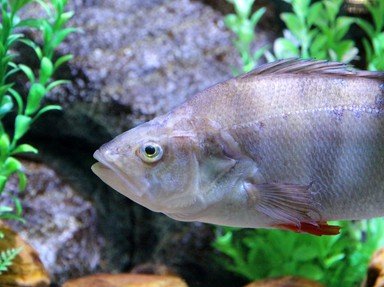Quiz Answer Key and Fun Facts
1. Aside from our familiar domesticated Betta, there are numerous wild Betta species. Though these are strictly freshwater fishes, they are now found on the islands of Sumatra and Borneo as well as on the Asian mainland
2. "Epiphytic algae" grow on the leaves of our aquarium plants. Both in the aquarium and in natural waters, they are an essential part of
3. Adult fish require less protein than juveniles and can fast for days at a time without harm.
4. Only three species of cichlids are native to India and Sri Lanka. They are all members of the genus Etroplus but more familiar to aquarists as
5. "Operculum" is an evocative anatomical label in describing fish, because in Latin it refers to the
6. In 1857 a German pharmacist living in Caracas (Venezuela), who had a strong amateur interest in biology, sent some interesting unknown fishes to Berlin, where they languished in jars in a museum collection. The males and females weren't even identified as the same species. The rediscovery of these colorful fishes in 1866 is owing to a missionary named
7. The floating bubblenest of a gourami serves to
8. Sphagnum peat is a source of beneficial tannins and helps to lower the pH of aquarium water.
True or false: Sphagnum "moss" is actually a fern.
9. Most fishes' eyes are all but immobile. One fish that can move its eyes almost as if it were winking, however, is a
10. You've decided that your community tank is too much of a mish-mash. You're going to make it a purely "Amazonian" tank. So you'll have to find a new home for your
Source: Author
hawgshoes
This quiz was reviewed by FunTrivia editor
crisw before going online.
Any errors found in FunTrivia content are routinely corrected through our feedback system.
